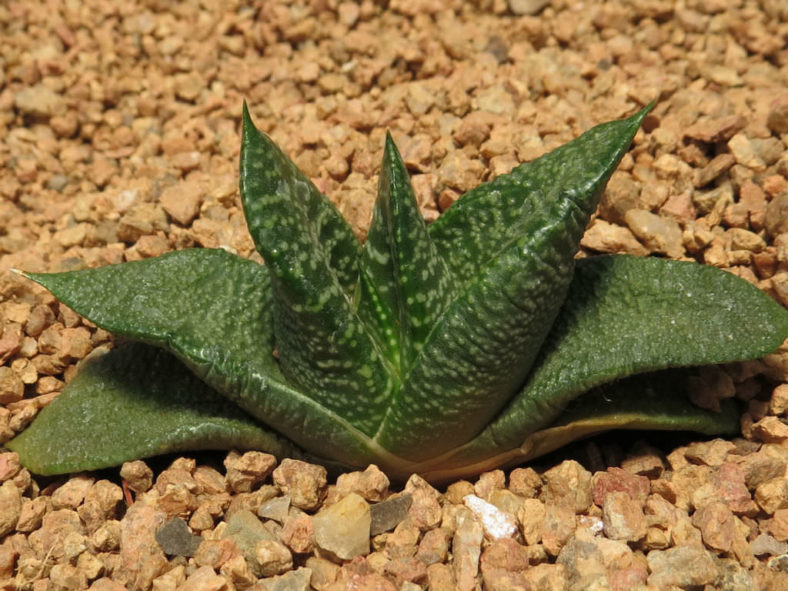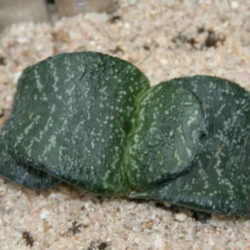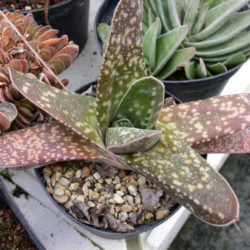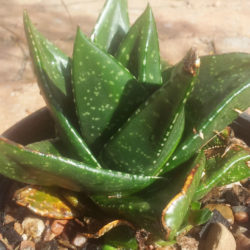Scientific Name
Gasteria nitida (Salm-Dyck) Haw.
Common Name(s)
Bathurst Gasteria
Synonym(s)
Aloe nitida, Gasteria nitida var. nitida, Haworthia nitida
Scientific Classification
Family: Asphodelaceae
Subfamily: Asphodeloideae
Tribe: Aloeae
Genus: Gasteria
Description
Gasteria nitida is a stemless succulent with smooth, triangular leaves arranged in spiral or distichous rosettes. It is a highly variable species that grows up to 8 inches (20 cm) tall and 11.2 inches (25 cm) wide, solitary or proliferating from the base to form a small clump. The leaves are up to 7.2 inches (18 cm) long and up to 3.2 inches (8 cm) wide, at first distichous, becoming rosulate or rarely remaining in the distichous phase. They are dark green with white spots arranged in irregular transverse bands. The juvenile leaves usually have tuberculate surfaces.
Flowers are nodding, up to 1 inch (2.5 cm) long, belly-shaped basally for slightly more than half its length. They are bright reddish pink with yellow throats and appear in simple or branched racemes in summer.
Origin
Gasteria nitida is native to South Africa. It occurs from Uniondale in Western Cape to the Great Fish River mouth in the Eastern Cape province at an elevation of about 3,280 feet (1,000 m).
Etymology
The specific epithet "nitida" means "shiny" in Latin and refers to the leaf surfaces.

Hardiness
USDA hardiness zone 9b to 11b: from 25 °F (−3.9 °C) to 50 °F (+10 °C).
How to Grow and Care
Gasterias are often grouped with Haworthia because the plants have similar cultural requirements. Both are attractive small succulents that can tolerate more shade than many, making them more suitable as houseplants. Gasterias are susceptible to fungal infections, which usually appear as black spots on the leaves. These result from too much humidity or water on the leaves, but they should not spread too quickly. Gasterias have a natural defense mechanism against such fungal attacks and attack the invading organism and seal off the wounded spot. Generally, any place where Haworthia and Aloe thrive will be hospitable to a Gasteria.
Gasterias are small, shallow-rooted, and relatively slow-growing. Therefore, they are often grown in small clusters in wide, shallow dishes. Over time, clusters will naturally enlarge as the mother plant sends off small plantlets.
See more at How to Grow and Care for Gasteria.
Varieties
Links
- Back to genus Gasteria
- Succupedia: Browse succulents by Scientific Name, Common Name, Genus, Family, USDA Hardiness Zone, Origin, or cacti by Genus
Photo Gallery
Click on a photo to see a larger version.



